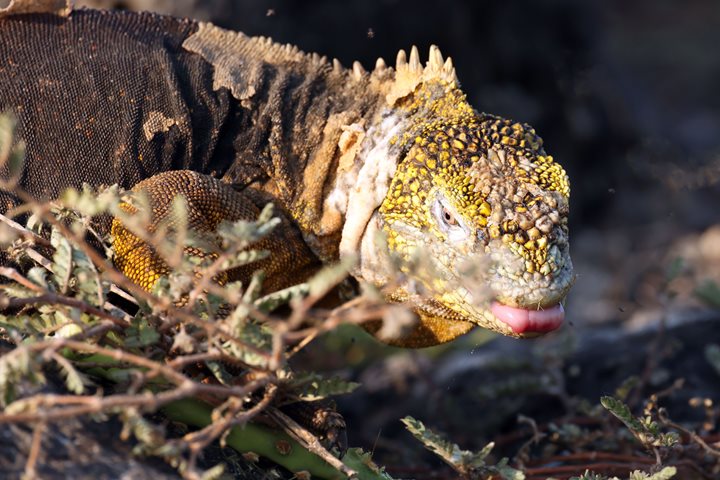Most of the Galapagos Islands are located very close to the Equator Line in the Southern Hemisphere. Genovesa Island is one of the few in the Northern Hemisphere. This fact influences the water temperature and the adaptation of some species. The prickly pear cacti here have soft spines due to the lack of terrestrial reptiles that would eat them. Similarly, the lack of a top predator like the Galapagos hawk means that a nocturnal animal like the short-eared owl hunts during the day. Genovesa also has the smallest marine iguanas in the Galapagos.
- Daily Expedition Reports
- 01 Jul 2023
Genovesa Island, 7/1/2023, National Geographic Islander II
- Aboard the National Geographic Islander II
- Galápagos
Walter Perez, Naturalist/Certified Photo Instructor
Walter was born in a very small town on the mainland of Ecuador. His first trip to the Galápagos was when he was 12 years old, visiting friends and aunt, who had moved to the islands. From the first moment he saw the Islands, he fell in love with the...
Read MoreShare Report
Peru and Galápagos Escape
VIEW ITINERARYRelated Reports
4/19/2024
Read
National Geographic Islander II
Sombrero Chino and Sullivan Bay, Santiago Island
Today we explored Sombrero Chino and Sullivan Bay, Santiago Island which are remarkably beautiful sites because of their impressive wildlife and landscapes. During the morning, we kayaked and snorkeled at Sombrero Chino Islet. In the afternoon, we moved to Sullivan Bay, where our guests had the chance to go for a Zodiac ride and a hike.
4/18/2024
Read
National Geographic Islander II
South Plaza and Santa Fe Islands
We are ready to set out early to explore the small and picturesque island of South Plaza. Here we find the endemic Galapagos land iguana, their reptilian features and colors stand out against the lava rocks and cactus forest. Swallow-tailed gulls nest right on and alongside the trail. Sea lions play in the water or rest under the bushes. On Santa Fe Island, we continue our excursions, this time with aquatic activities such as kayaking and snorkeling in the shallow turquoise waters of Santa Fe Bay. Sea lions, turtles, large schools of various fish, and rays are found. Later we explored by land to see the island’s land iguanas, finches, doves, and mockingbirds.







